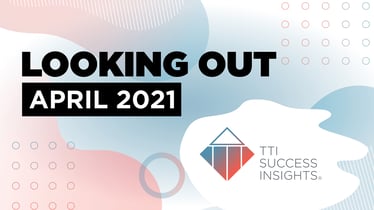4 Trends to Build an Effective Workplace Communication Model
How to Manage the Complexities of Workplace Communication
Communication in the workplace has changed big time, and it continues to change rapidly. The reasons? There are many, including technology, marketplace changes, or cultural changes. Only two decades ago there were no mobile phones, nor computers to work with.
People were using traditional ways of communicating like letters and face-to-face meetings. Now, emails and phone conversations dominate the workplace, as they became the most effective ways of transmitting information quickly and precisely.
Trend 1 - More Than One Work Device
The modern employee isn't only using a laptop for emailing, but also a phone or tablet. A recent study performed by Usamp Research tested 508 workers at managerial levels to CEO levels. The study shows that 85% of the workers use more than one device.
While that statistic may shock you, here is another one: 32% of them use three or more devices for work purposes. After all, it all makes sense. There are thousands of emails to answer and so many things to communicate at once.
Trend 2 - The Need for Independence
Employee's need for independence has grown stronger and stronger. That means that employers need to find a way to make their subordinates feel comfortable and offer them a chance to a balanced work life.
Instead of showing up at work at 8 am in the morning each day, the modern employee will complete his tasks when he pleases...it could be in the morning, afternoon or evening. It does not matter. As long as the job is completed, the employee is fine.
Technology backs up this communication trend with smart gadgets and devices meant to help companies organize a stable and functional communication routine. If you give your employee freedom and efficient communication, your business will skyrocket.
Trend 3 - Instant Communication
Let us first define this term. Instant communication happens when certain information is instantly available. For example, email, or a text message is a form of instant communication. The text or email shows up, and you can instantly start reading and collecting that information.
Voice mails are not a form of instant communication. They require picking up the phone, and listening carefully to the recording. It takes minutes to receive the relevant information, while reading a text you can scan the information, and reach it more quickly.
Instant communication is extremely important when it comes to big companies. When there are hundreds of employees, it is very hard to send data through other types of messages.
In fact, according to the same study conducted by Usamp Research, 82 percent of employees prefer text messages instead of other forms of voicemail. That is a lot, don't you think?
Trend 4 - Inside-Company Communication Software
Some companies prefer customizing their internal communication by using different business services. These services allow for a great communication, feedback, and organization between the management team and employees.
They can create a connection between the leadership, the management team, and the employees. By automating weekly check-ins between workers and managers, a company can keep track of all completed tasks.
Conclusion
If you are in a leadership position, you really need to pay attention to these aspects. Communication is not only the most basic way of connecting with other people but also the number one asset a company can have at their disposal.
It is up to you whether you choose to approach innovative and new ways of communication between you and your employees or neglect this aspect. Understanding their needs and offering them ways of fulfilling those needs is the way to go. Ignore the communication aspect and watch your business break.

Kenneth Waldman
Kenneth Waldman is a professional content creator with over 5 years of experience and is also a writer at EssayMama.com.


/Why%20Communication%20is%20the%20Key%20to%20All%20Successful%20Business%20Interaction.png?width=374&name=Why%20Communication%20is%20the%20Key%20to%20All%20Successful%20Business%20Interaction.png)

0 Comments